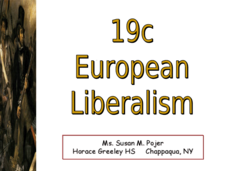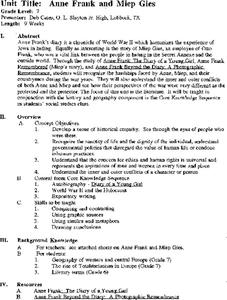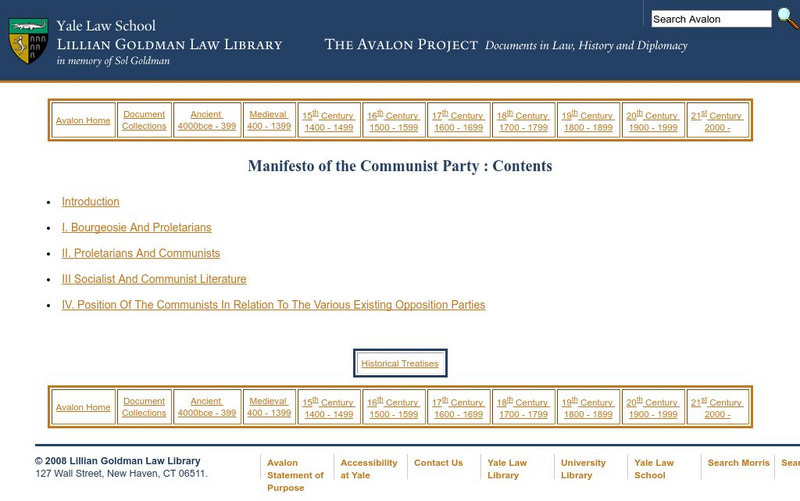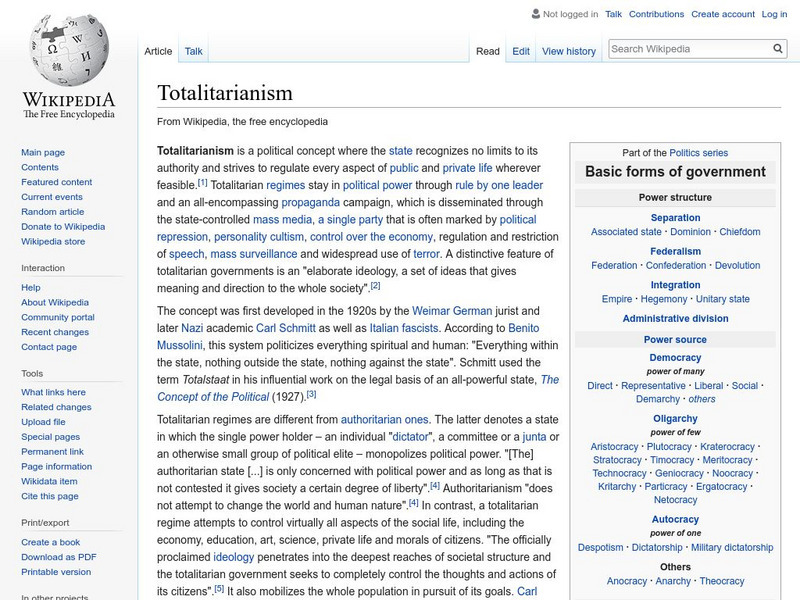The New York Times
Teaching Orwell and '1984’ with the New York Times
Doublethink and alternate facts? Big Brother and Facebook? 1984 and 2019? Sales of 1984 have surged and so has the use of George Orwell's dystopian classic in classrooms. Whether new to teaching the novel or a seasoned veteran...
Great Books Foundation
Discussion Guide for 1984
George Orwell's Nineteen Eighty-Four, published in 1949, can seem strangely prophetic when compared to modern news events and politics. Readers of Orwell's dystopian classic sharpen their critical thinking skills by engaging in...
Museum of Tolerance
Documents That Shape Society
The Bill of Rights is a foundational document of American democracy, much like the Nuremberg Laws were a foundational document of the Reichstag of Nazi Germany. But that's where their similarities end. Engage high schoolers in a...
Core Knowledge Foundation
Genetics and the Master Race
How did the beginnings of genetic research influence the Nazi party? A thorough, engaging unit incorporates the work of Gregor Mendel, the study of inherited traits, and the use of racism and discrimination during the Holocaust.
Curated OER
Totalitarianism
Introduce the concept of Totalitarian government. This informative slide show outlines key reasons, events, and rulers that employ a Totalitarian Doctrine.
Curated OER
Why do wars occur?
Understanding the causes of war is one way (possibly) to prevent it. World War II is used as a case study to facilitate an understanding of reasons why wars start. Topics covered included Totalitarianism, scarcity of resources, need for...
Curated OER
19c European Liberalism
If you'd like to prompt some great discussions in your history class, this presentation will surely get your class talking. Addressing 19th century liberalism in Europe (including influences from England, France, America, and Ireland),...
Curated OER
Putin: 'No way back' from democracy
Imagine a meeting between President Bush and Putin. Get your class thinking about global awareness, democracy, and totalitarian modes of government. They examine how two leaders approach major governmental issues and run their countries...
Curated OER
Hitler's Fatal Gamble
Students consider the differences between totalitarianism and democracy. In this comparative politics instructional activity, students will read a handout describing the major components that comprise totalitarianism and democracy,...
Curated OER
Anne Frank and Miep Gies
Students explore what it was like to live as a Jew during World War II. In this World War II lesson, students read the diary of Anne Frank. Students compare the life of Anne Frank and Miep Gies.
Curated OER
What Fostered the Axis?
Ninth graders present the major cultural, economic and political forces in Germany, Italy & Japan that allowed for the rise and dominance of totalitarian regimes in that country. They discuss how the above listed forces brought the...
Curated OER
History: I'm Watching You 24/7
Students examine the growth of authoritarian societies. Focusing on North Korea, they watch video clips looking for examples of totalitarianism and identify the problems there. They write letters to the editors of local newspapers...
Curated OER
Hitler¿¿¿s Fatal Gamble ? Comparing Totalitarianism and Democracy
Students compare/contrast totalitarianism and democracy and examine their roles in World War II. They read a handout, complete a Venn diagram, and participate in a class discussion.
Yale University
The Avalon Project: Manifesto of the Communist Party
Complete text of the Communist Manifesto.
Internet Encyclopedia of Philosophy
Internet Encyclopedia of Philosophy: Juan Donoso Cortes
An article on the ideas of Juan Donoso Cortes (1809-1853 CE), a political theorist of the 19th century who developed a theory of dictatorship. His ideas influenced another political thinker, Carl Schmitt whose ideas were later used by...
British Library
British Library: 20th Century Works: Nineteen Eighty Four
"Nineteen-Eighty-Four" is a novel published by George Orwell in 1949. Read an overview and view additional resources such as articles, collection items, and teacher resources.
Thinkport Education
Thinkport: Totalitarianism in Stalinist Russia
A module where students analyze how the author uses text structure to emphasize key points or explanations in order to achieve the purpose for writing or point of view.
Internet History Sourcebooks Project
Fordham University: Modern History Sourcebook: Ronald Reagan: Evil Empire Speech, June 8, 1982
This sites provides a copy of the complete text of Ronald Reagan's Evil Empire Speech, June 8, 1982.
Wikimedia
Wikipedia: Totalitarianism
A detailed treatment on the practice of totalitarianism. The article provides a historical background and how it was a major force in 20th century European history (in Nazi Germany and the Soviet Union).
Tom Richey
Tom Richey: Totalitarianism in Interwar Europe
Identify those nations where totalitarianism reigned following World War I. Follow the political systems of Russia, Germany, and Italy from 1919-1939 through this illustrated slideshow.
Other
Remember.org: Nazi Fascism and the Modern Totalitarian State
A lesson plan which includes a reading that distinguishes between the various forms of totalitarian dictatorships in reference to fascism. States the instructional objectives and chapter content covering characteristics of...
Alabama Learning Exchange
Alex: How Hate Changes Society
Government classes usually focus on the workings of the United States Government alone. In this unit of study, students will compare the United States government with that of pre-Nazi Germany. This unit will demonstrate to students how...
Internet Encyclopedia of Philosophy
Internet Encyclopedia of Philosophy: Hannah Arendt
This site provides a very thorough and detailed look at the life and philosophies of Hannah Arendt (1906-1975 CE). This site focuses on Arendt's influences and thoughts on Totalitarianism, the human condition and Revolution among others.
Digital Public Library of America
Dpla: The Rise of Italian Fascism and Its Influence on Europe
This collection uses primary sources to explore the rise of Italian Fascism and its influence on Europe including Adolf Hitler. Set includes an overview, primary sources, links to related resources, and a teaching guide.




















